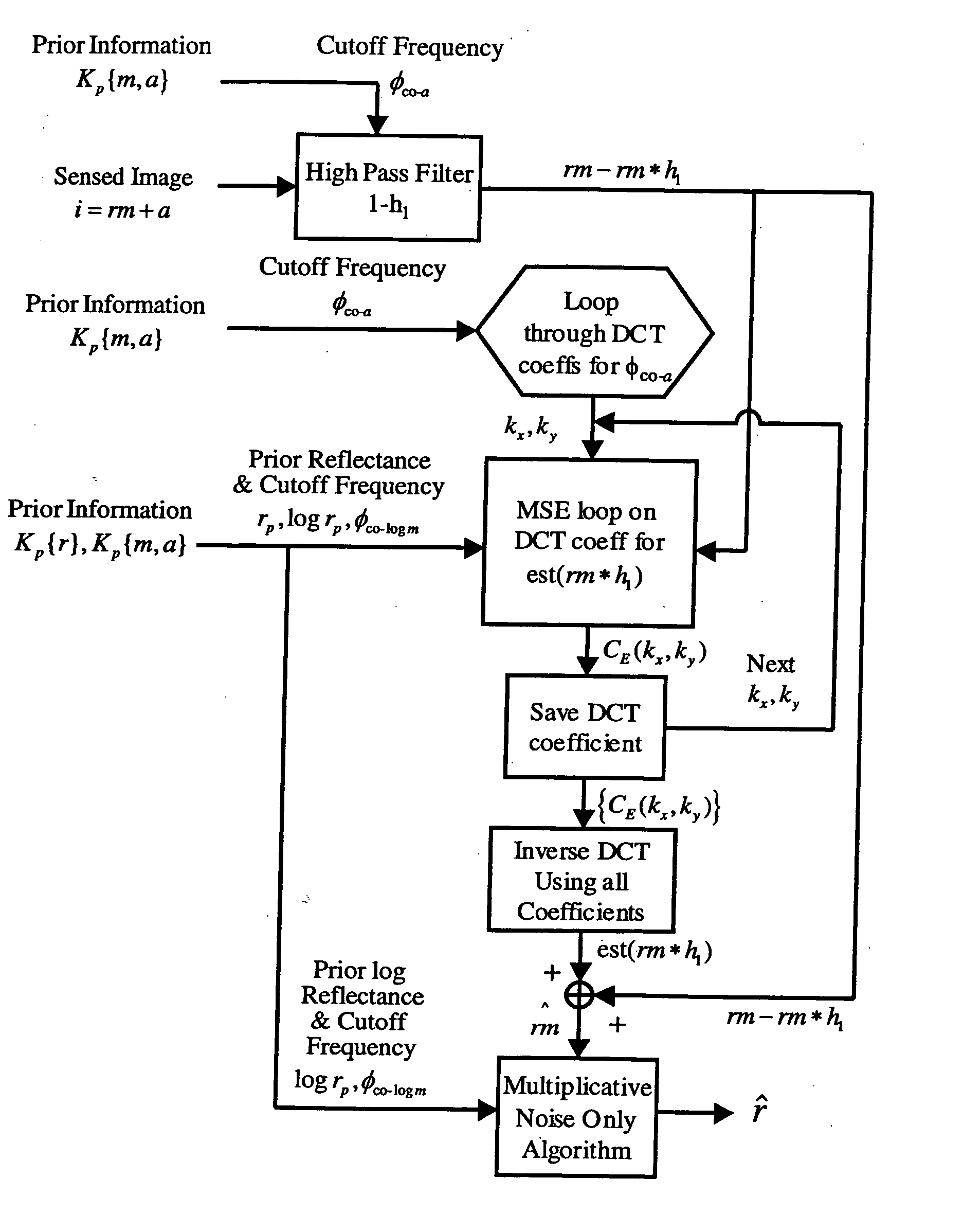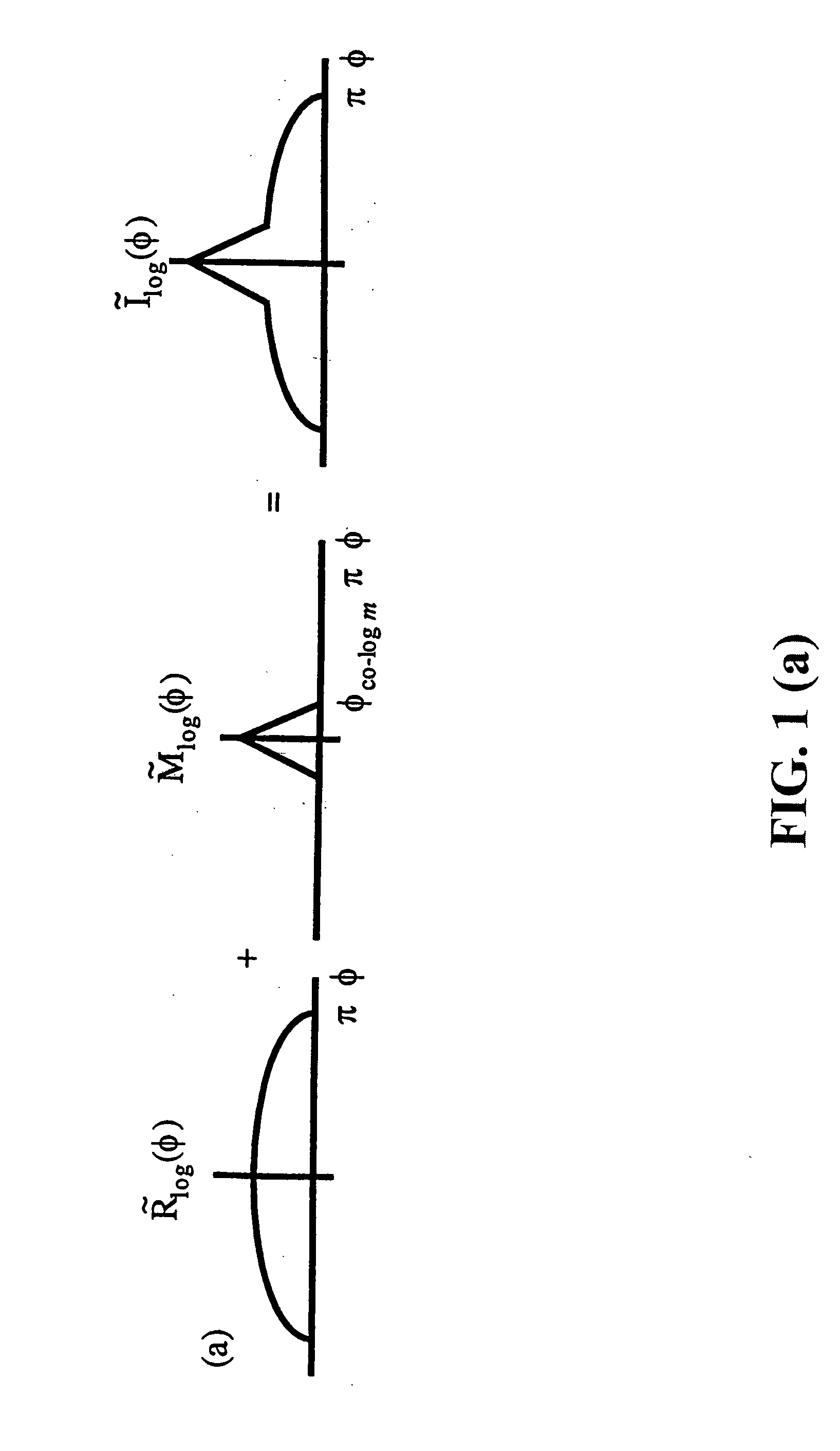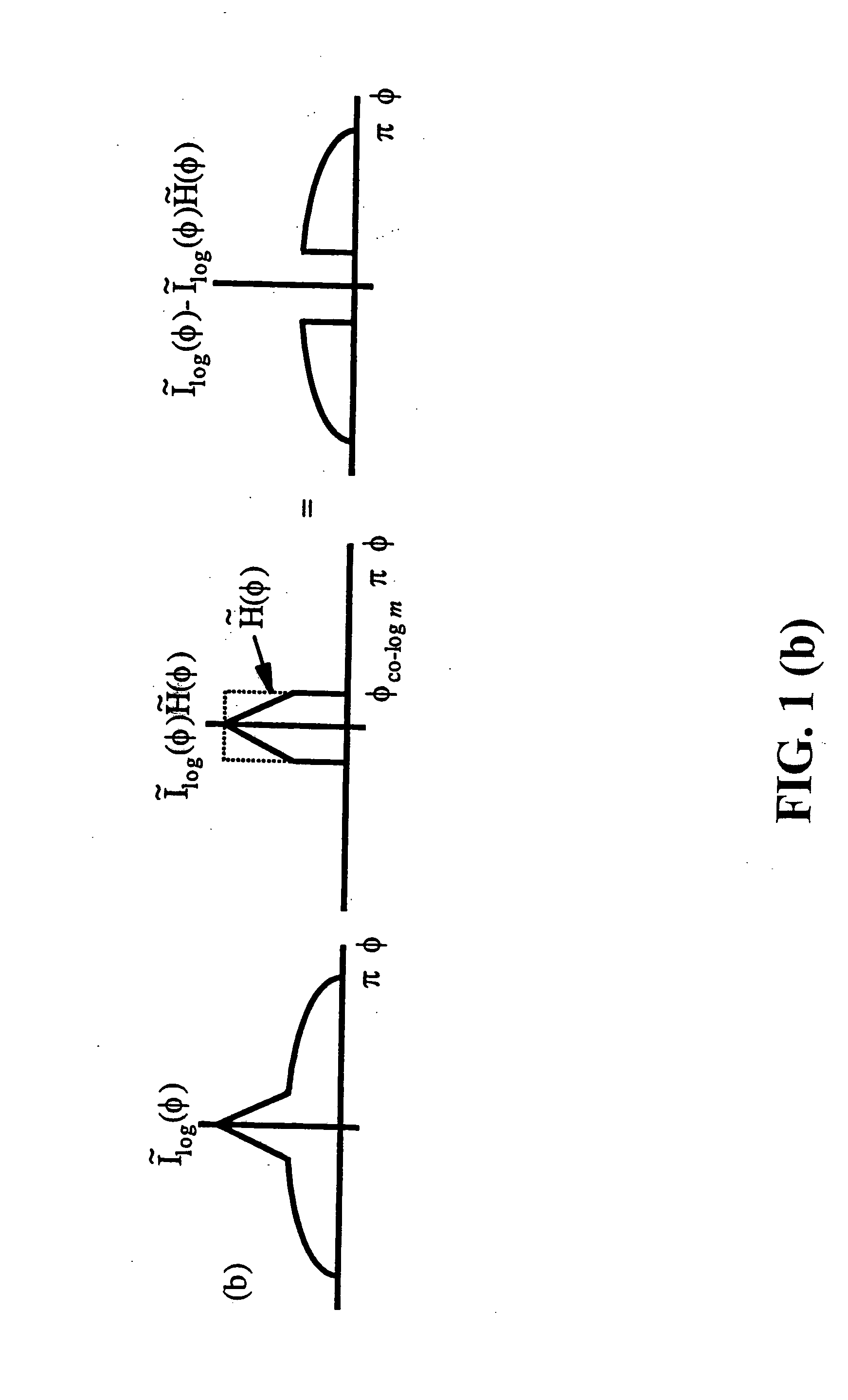Spatial surface prior information reflectance estimation (SPIRE) algorithms
a technology of prior information reflectance and estimation algorithms, applied in the field of spectroscopy, can solve the problems of surface reflectance estimation, worse estimates in these areas, and elm also suffers, so as to improve standard deviation and rms performance, and remove additive noise
- Summary
- Abstract
- Description
- Claims
- Application Information
AI Technical Summary
Benefits of technology
Problems solved by technology
Method used
Image
Examples
Embodiment Construction
The goal of this invention is to compensate for atmospheric effects using only prior spatial information about the scene. The motivation for this was threefold. First, such an approach would likely work better than an atmospheric physics-based method when using airborne sensors since it is not dependent on the unknown state of the atmosphere above the sensor. Second, the repetitive and increasing amount of remote sensing data collected promises to eventually provide the needed prior surface reflectance information. Third, lightness algorithms that model the human visual system's ability to achieve color constancy over varying illumination conditions (multiplicative noise only) through spatial processing helped to inspire this effort to develop related algorithms for remote sensing applications.
This is the first development of a new class of algorithms that use prior surface reflectance information to correct for multiplicative and additive noise introduced by variations in illumi...
PUM
| Property | Measurement | Unit |
|---|---|---|
| Spatial SPIRE spectral reflectance | aaaaa | aaaaa |
| surface reflectance | aaaaa | aaaaa |
| reflectance | aaaaa | aaaaa |
Abstract
Description
Claims
Application Information
 Login to View More
Login to View More - R&D
- Intellectual Property
- Life Sciences
- Materials
- Tech Scout
- Unparalleled Data Quality
- Higher Quality Content
- 60% Fewer Hallucinations
Browse by: Latest US Patents, China's latest patents, Technical Efficacy Thesaurus, Application Domain, Technology Topic, Popular Technical Reports.
© 2025 PatSnap. All rights reserved.Legal|Privacy policy|Modern Slavery Act Transparency Statement|Sitemap|About US| Contact US: help@patsnap.com



